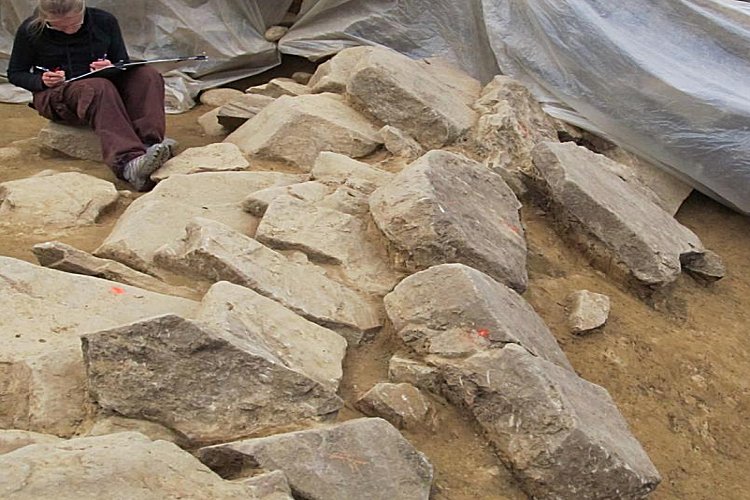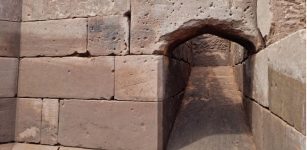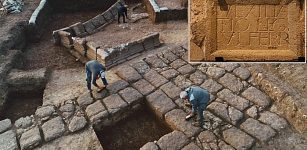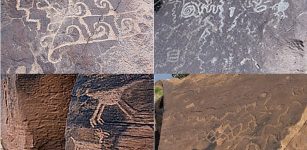Zyndram’s Hill: Oldest-Known Stone Wall – A Masterpiece Of Architecture Found In Poland
AncientPages.com - The oldest example of stone wall in the history of construction in the Polish lands, more than two and a half thousand years older than Romanesque architecture, has been discovered by archaeologists from Kraków on Zyndram’s Hill in Maszkowice (Małopolska).
Archaeologists estimate the age of the settlement at between 1,750 and 1,690 BC.
"In the whole Central Europe there are only a dozen sites dated so early with more or less well-preserved stone fortifications - said Marcin S. Przybyla, the archaeologist from Jagiellonian University, who led the archaeologists in their diggings.
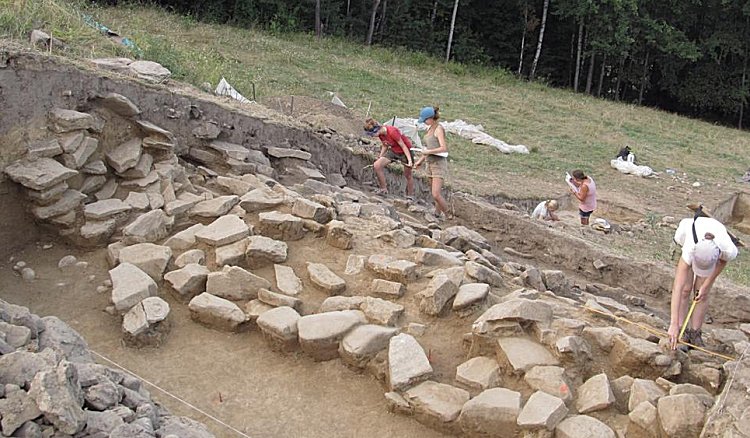
View of the northern part of the archaeological excavation in mid-August. Retaining wall from the Early Bronze Age is visible on the cross section of the trench, in the bottom of the trench a line of rocks forming the lowest layer of the wall. Photo by M.S. Przybyła.
“At that time, the use of the stone as a building material was typical of the Mediterranean areas. In the temperate zone of Europe until the Middle Ages fortifications were built with wood and clay."
Surprisingly, it turned out that under the remains of the settlement from the late Bronze Age and Iron Age, archaeologists unearthed relics of a more than a half thousand years older settlement.
"Its inhabitants were not indigenous people, living in Małopolska since the end of the Stone Age, but a small, no more than 12-person group of colonists from the south, from the territory of present-day Hungary" - Dr. Przybyła said.
The size of the settlement discovered in Maszkowice is very different than other one found earlier.
The top of the hill was flattened, creating a plateau with an area of 0.5 hectares. Tons of clay from the hill top were used to build a terrace on the gentle eastern and northern slope of the hill, which additionally expanded the area of the settlement.
The wall – that was about 120-140 m long, surrounding the entire settlement from the east and north - is made of large, half-meter sandstone blocks held together with clay.
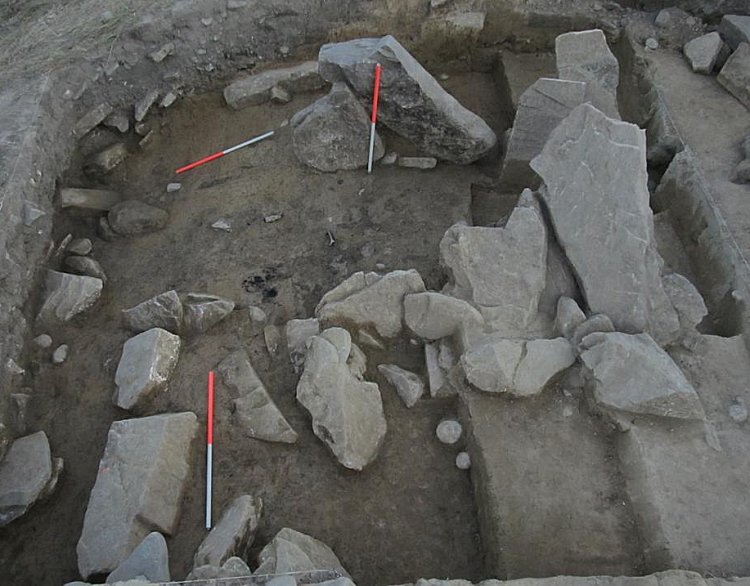
View of stone slabs marking the passage leading to the interior of the settlement, in the bottom of the photograph one of the blocks from the outer face of the wall. Photo by M.S. Przybyła
Unlike the interior wall, it had not been made of sandstone blocks with irregular shapes, but huge, tessellating blocks, often reaching 1 meter in length. Some of them have a regular hexagon shape. 4-5 layers of tightly adjacent stones are preserved to this day.
Most probably the original height of the fortification facade could reach 2.7 m.
On the slope, about 5 meters from the face of the wall, the defence system was further strengthened by an approximately 1.5 m deep, narrow trench with a triangular cross-section.
The team found also the remains of the entrance gate, a narrow, 1.5 m corridor, crossing the wall and leading up through the clay embankment, toward the interior of the settlement.
The walls of this passage were reinforced with large sandstone slabs "anchored" in the lowest layers of stones forming a retaining wall.
Among earlier findings made in the area of ‘Zyndram’s Hill’ is a stylized human figurine - so-called violin idol that resembles statuettes usually found in the northern Balkans and Mycenaean Greece.
"This direction contacts of at least some of the prehistoric inhabitants of 'Zyndram’s Hill' has already been indicated by previously discovered fragment of a stylized human figurine - so-called violin idol. Such statuettes were produced in large amounts in Mycenaean Greece, and Northern Balkans" - he added.
The researchers plan to continue excavations next year.
AncientPages.com
Source:

